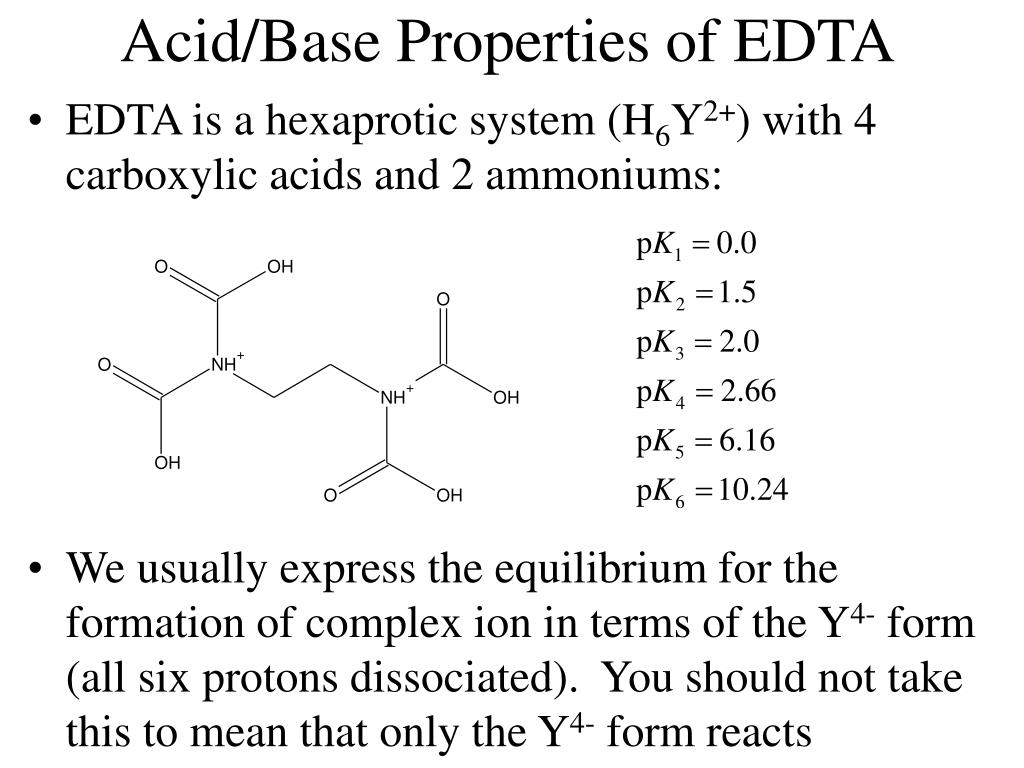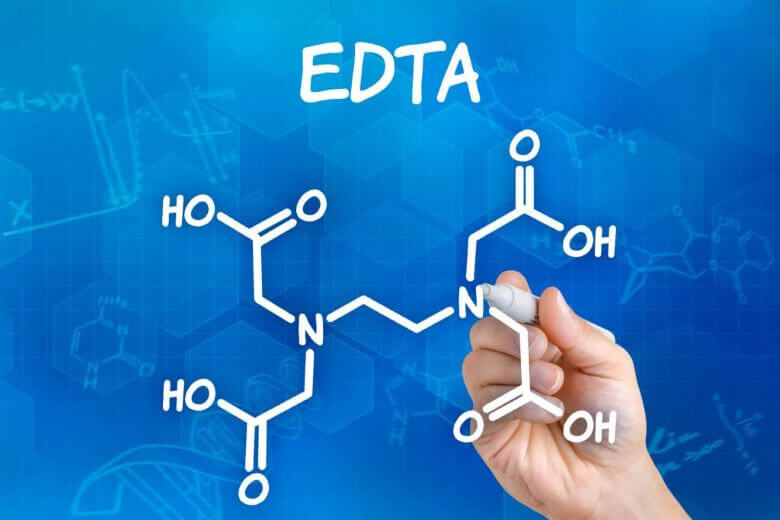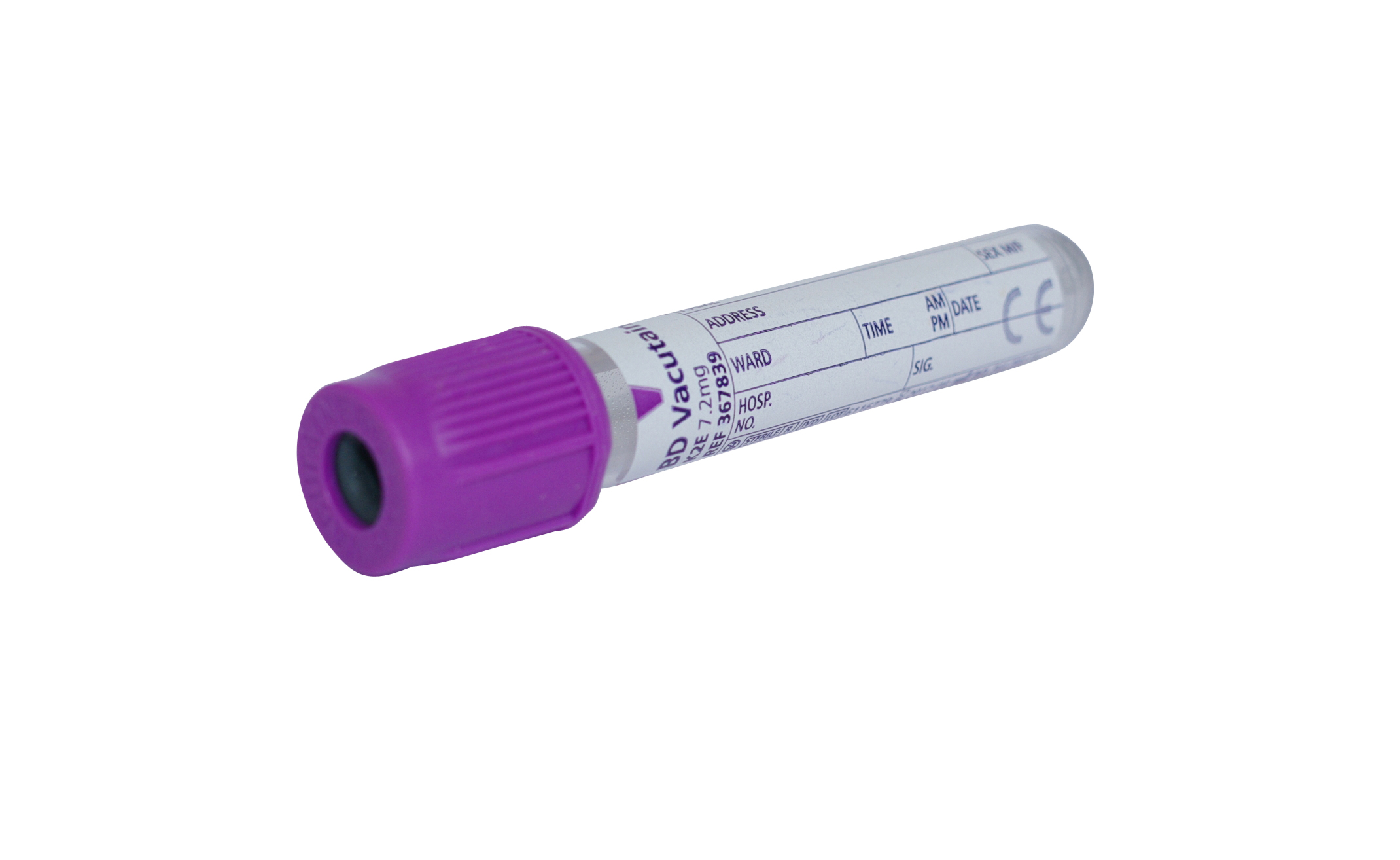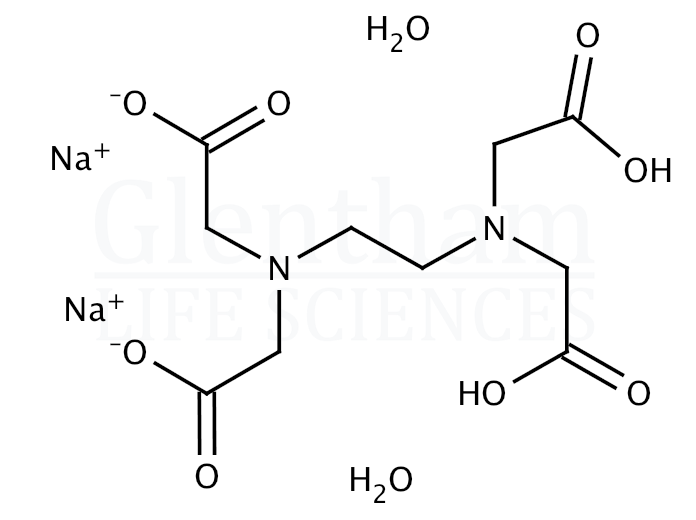
PPT EDTA Titrations PowerPoint Presentation ID234018
Chelation Therapy Jeanne A. Drisko MD, in Integrative Medicine (Fourth Edition), 2018 EDTA EDTA is poorly absorbed from the GI tract (<5%) and, as a consequence, should only be administered by a parenteral route. 4 It is primarily distributed in extracellular fluids, which limit its capacity to chelate intracellular metals.

EDTA is a ligand.
Ethylenediaminetetraacetic acid (EDTA) is a medication used in the management and treatment of heavy metal toxicity. It is in the chelating class of drugs. This activity outlines and reviews the indications, actions, and contraindications for EDTA as a valuable agent in managing lead toxicity.

EDTA Full Form, Structure and Form, Uses, Formula
1. Introduction. Divalent metal ions including Mg 2+, Cu 2+, Fe 2+, Mn 2+, Ni 2+, and Zn 2+ play prominent roles in enzymatic catalysis. The small organic compound ethylene diamine tetraacetic acid or commonly known as EDTA is frequently used to chelate these metal ions to investigate enzyme function in the absence of metal co-factors.

EDTA Full Form Acid
TBE or Tris/Borate/EDTA, is a buffer solution containing a mixture of Tris base, boric acid and EDTA . In molecular biology, TBE and TAE buffers are often used in procedures involving nucleic acids, the most common being electrophoresis.

EDTA Full Form javatpoint
Scope and Significance Ethylenediaminetetraacetic acid (EDTA) is a well known metal-chelating agent, extensively used for the treatment of patients who have been poisoned with heavy metal ions such as mercury and lead.

EDTA Full Form Ethylene Diamine TetraAcetic Acid StudyWoo
The ADI for humans as set by JEFCA is 1.9 mg EDTA/kg bw (or 2.5 mg Ca-EDTA/kg bw), corresponding to 23.37 mg EDTA/kg bw for mice and is slightly higher than the one we used (21 mg/kg bw) 31.

Disodium Edetate Disodium EDTA Drug Molecule. Skeletal Formula. Stock Vector Illustration of
TAE buffer TAE buffer is a buffer solution containing a mixture of Tris base, acetic acid and EDTA. In molecular biology, it is used in agarose electrophoresis typically for the separation of nucleic acids such as DNA and RNA. [1] It is made up of Tris-acetate buffer, usually at pH 8.3, and EDTA, which sequesters divalent cations.

PPT EDTA Titrations Chapter 13 PowerPoint Presentation, free download ID6757871
TE buffer is a commonly used buffer solution in molecular biology, especially in procedures involving DNA, cDNA or RNA. "TE" is derived from its components: Tris, a common pH buffer, and EDTA, a molecule that chelates cations like Mg 2+. The purpose of TE buffer is to solubilize DNA or RNA, while protecting it from degradation. Recipe

What is the full form of EDTA EDTA Full Form
Biologically important ions such as Ca, K, Mg, Fe, and Zn play major roles in numerous biological processes, and their homeostatic balance is necessary for the maintenance of cellular activities. Sudden and severe loss in homeostasis of just one biologically important ion can cause a cascade of negative effects. The ability to quickly, accurately, and reliably quantify biologically important.

What is EDTA? What is its denticity?
Ethylenediaminetetraacetic acid ( EDTA ), also called edetic acid after its own abbreviation, is an aminopolycarboxylic acid with the formula [CH 2 N (CH 2 CO 2 H) 2] 2. This white, water-insoluble solid is widely used to bind to iron (Fe 2+ /Fe 3+) and calcium ions (Ca 2+ ), forming water-soluble complexes even at neutral pH.

PPT EDTA Titrations Chapter 13 PowerPoint Presentation, free download ID6757871
Ethylenediamine tetraacetic acid (EDTA) is a polyprotic acid containing four carboxylic acid groups and two amine groups with lone-pair electrons that chelate calcium and several other metal ions.

619 EDTA Antikoagulantien US Blood Tissue (Biology)
Popular answers (1) Michael J. Benedik Hamad bin Khalifa University EDTA is a commonly used chelating agent in molecular because it is a very effective chelator of Magnesium. Most nucleases.

Complexes formation. The figure 2 shows the EDTA ligand binding to a... Download Scientific
Ethylenediaminetetraacetic acid is a molecule that we know as a chelating agent. Furthermore, it is something that has a claw-like structure that we use to stick and grab other molecules. On one hand, its some part sticks to calcium and on the other hand, some of it sticks to metals. Moreover, doctors prescribe them to clear toxins from the body.

EDTA South West London Pathology
It is a popular chemical that goes by several names and is frequently utilized in medicinal and industrial applications. Ferdinand Munz was the first to synthesize this chemical in 1935. It is a colorless, crystalline, slightly soluble organic molecule utilized in biology and inorganic chemistry. It is a chelating agent.

What is the full form of EDTA? EDTA full form
In this chapter, we introduce EDTA (Extensive de novo TE Annotator), a new comprehensive pipeline composed of high-quality tools to identify and annotate all types of TEs. The development of EDTA is based on the benchmarking results of a collection of TE annotation methods. The selected programs are evaluated by their ability to identify true.

EDTA disodium salt dihydrate (CAS 6381926) Glentham Life Sciences
Applications- EDTA : EDTA is a popular chelating agent for divalent ions, that is widely used in biochemistry, molecular biology and cell biology. EDTA is an abbreviation for EthyleneDiamineTetraAcetic ac (and many other related molecules). EDTA is an amino acid widely used to sequester di- and trivalent metal ions (Ca2+ and Mg2+ for example).